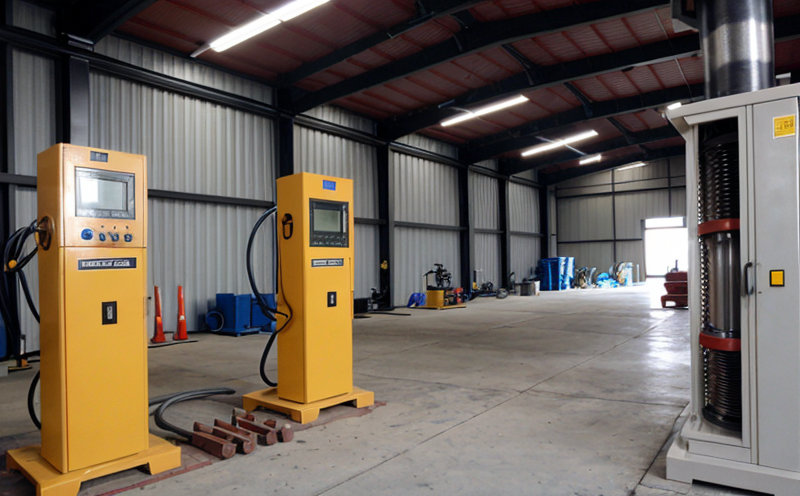ASTM D642-16 Compression Testing for Cardboard Boxes
The ASTM D642-16 standard is a widely recognized method used to determine the compressive strength of corrugated fiberboard boxes. This testing procedure plays a critical role in ensuring that packaging meets the required mechanical integrity standards set by regulatory bodies, such as the International Organization for Standardization (ISO) and others.
The ASTM D642-16 standard is particularly important for quality managers and compliance officers within manufacturing industries where reliable packaging is essential. By conducting this test, manufacturers can ensure that their cardboard boxes are robust enough to withstand handling processes without compromising product integrity or safety during transportation.
Understanding the principles behind this testing method requires an overview of its components. The standard specifies a specimen preparation process involving corrugated fiberboard sheets cut into a specific size and shape suitable for compression testing. Once prepared, these specimens are placed in a compression machine that applies controlled loads until failure or deformation occurs.
The primary goal is not only to assess the compressive strength but also to evaluate how different variables such as moisture content, temperature variations, and stacking density impact overall performance. For R&D engineers focused on improving product design, this information can be invaluable in refining materials selection processes and optimizing structural designs.
Compliance officers will find ASTM D642-16 particularly useful when working with suppliers or during internal audits to ensure that packaging adheres strictly to industry standards. Proper documentation of test results allows companies to demonstrate compliance with regulatory requirements, which is crucial for maintaining a positive brand image and avoiding potential penalties.
Given the importance placed on sustainable practices in modern manufacturing processes, understanding how ASTM D642-16 contributes towards achieving these goals becomes even more pertinent. By ensuring that packaging withstands necessary stresses without compromising its environmental credentials, manufacturers contribute positively to reducing waste throughout supply chains.
Scope and Methodology
| Parameter | Description |
|---|---|
| Sample Preparation | Cutting corrugated sheets into 305 mm x 254 mm (12" x 10") specimens with a minimum thickness of 2.5 mm. |
| Test Machine | A universal testing machine equipped with compression fixtures capable of applying loads up to at least 6,000 N. |
| Loading Rate | The rate should be controlled between 1 and 3 in/min (25.4 and 76.2 mm/min). |
| Specimen Orientation | Corrugated layers parallel to the direction of applied force. |
| Failure Criteria | Determined by observing when either the specimen buckles or reaches a specified load limit (typically 6,000 N). |
The ASTM D642-16 procedure involves placing the prepared specimens into a compression machine designed specifically for this type of testing. The rate at which loading is applied must be carefully controlled to ensure accurate measurements. Specimens are typically oriented so that their corrugated layers align parallel with the direction of the applied force.
Failure occurs when either buckling or reaching the specified load limit, whichever comes first. This criterion ensures that both structural integrity and maximum allowable stress levels are considered during evaluation. Compliance officers rely heavily on accurate documentation generated from these tests to prove adherence to relevant standards and regulations.
Quality and Reliability Assurance
The ASTM D642-16 compression test serves as a crucial tool for quality assurance teams in various industries, including food, pharmaceuticals, and electronics. By ensuring that cardboard boxes meet the necessary mechanical strength requirements specified by this standard, companies can prevent costly issues such as product damage during shipping or storage.
For R&D engineers involved in developing new packaging solutions, ASTM D642-16 provides invaluable data on how different factors influence box performance. This knowledge allows them to make informed decisions about material choices and structural design enhancements aimed at improving overall reliability.
Incorporating regular testing into procurement processes helps ensure that suppliers deliver products that consistently meet quality expectations. Compliance officers benefit from consistent documentation of test results, which supports audits and certifications related to packaging compliance.
Environmental considerations also play a role in the development of sustainable packaging solutions. By using ASTM D642-16 as part of an ongoing evaluation process, manufacturers can identify areas where improvements could lead to reduced waste generation while maintaining or enhancing product protection capabilities.
Use Cases and Application Examples
- Food Industry: Ensuring that corrugated boxes used for transporting fresh produce remain intact during transit, thereby preserving freshness and quality.
- Pharmaceuticals: Verifying that drug products stored in cardboard containers are protected from external pressures that could compromise their stability or efficacy.
- Electronics: Confirming that packaging materials used for shipping sensitive components can withstand the rigors of transportation without causing damage.
- Consumer Goods: Guaranteeing that retail displays featuring cardboard boxes maintain structural integrity to protect products during display and handling.
- Logistics: Evaluating the durability of packaging under various environmental conditions, including humidity levels and temperature fluctuations common in different regions.
- Sustainability Initiatives: Assessing the impact of changes made to corrugated fiberboard formulations on both performance metrics and resource efficiency goals.
The ASTM D642-16 compression test is a versatile tool applicable across multiple sectors, making it an essential component in maintaining high standards for packaging integrity. Its ability to provide detailed insights into the mechanical properties of corrugated fiberboard makes it indispensable for ensuring safe and effective transportation conditions.





